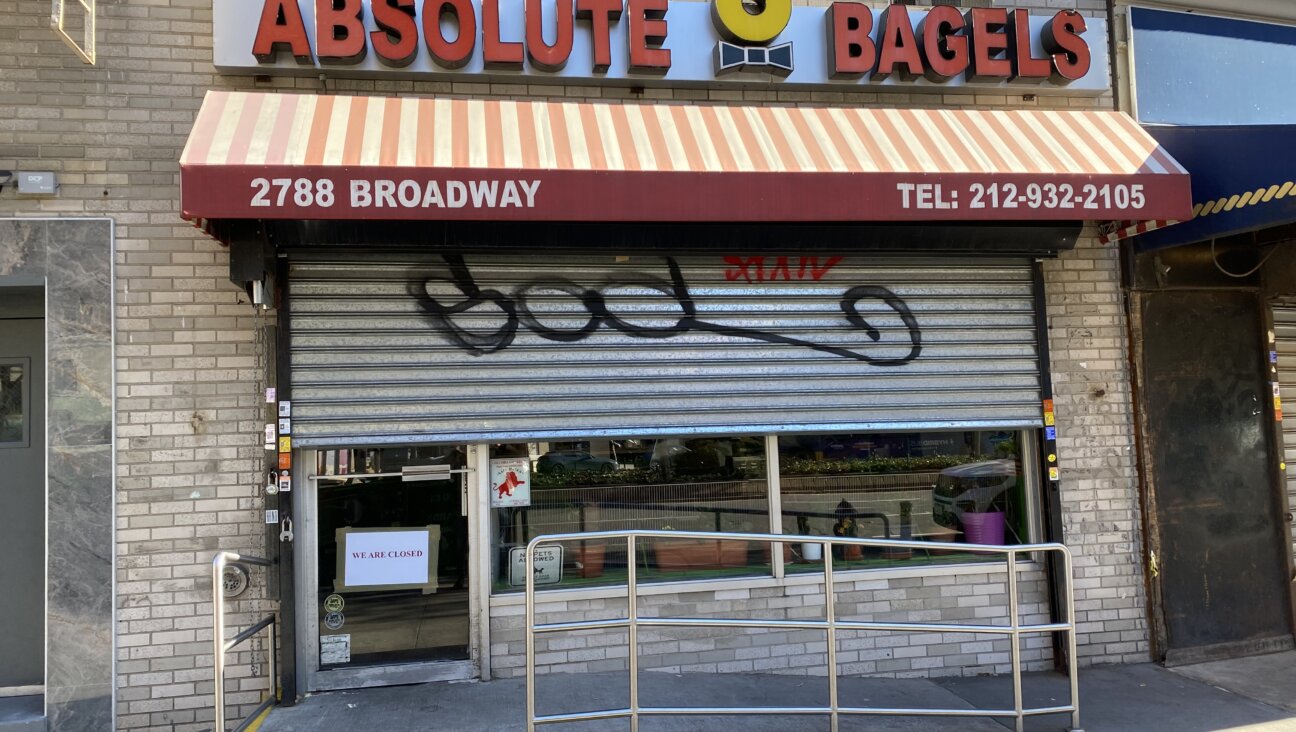Some Not So Traditional Latkes Ideas

The unofficial state motto of Oregon is “Things look different here,” and it’s true. More to the point, people who live here look at things differently. So when the Portland Tuv Ha’Aretz steering committee met to talk about upcoming events a few months ago, we decided to take a fresh look at (or taste of) latkes.
We all love latkes. But let’s face it; after years of potato-oniony goodness, we decided it be more interesting to try some alternative recipes that would give everyone some new ideas for their own upcoming Hanukkah celebration. More importantly, this event was an opportunity to get together, cook and eat; what more could you ask from a gathering of Jews?
On Nov. 14, we hosted a non-traditional latke party at the home of two of our members. Six different kinds of latkes were represented (some recipes below). Our hosts also made a delicious white bean/butternut squash soup. I fried up a variation of my friend Andrine’s latkes, using the last zucchini from my garden, along with butternut squash, carrots, parsnips and plenty of onion. Others brought sweet potato latkes, yam/ginger latkes, and veggie-feta renditions. With hot-spiced cider and plenty of sour cream and homemade applesauce, we were swimming in latkes.
While all the varieties tasted good, we discovered that frying tends to obscure more subtle flavors. For example, the ginger in the yam/ginger latkes was not as pronounced as it could have been. One solution, is simply to use more ginger, but another (more non-traditional one) is to cook your latkes on a griddle, rather than frying them in oil. Griddle frying is also less messy, and it doesn’t leave your whole house smelling like oil for a week. It can be applied to any of the recipes below.
The feta in the veggie-feta latkes provided an added zing, and the cheese chunks held their shape and flavor nicely during the frying process. The gluten-free options in Andrine’s latke recipe, which could be adapted to other recipes as well, make this a great alternative for those with gluten allergies. One thing I find helpful is that smaller and thinner is better, when it comes to forming your pancakes. A smaller, flatter latke cooks more quickly and more evenly.
We rounded out the event with a reading of Lemony Snicket’s, “The Latke Who Couldn’t Stop Screaming,” which, if you’re not familiar with it, is a hilariously funny and slightly twisted story, destined to become a contemporary Hanukkah classic. Everyone was afflicted by that well-known Hanukkah syndrome, otherwise known as “latke stomach,” and all went home with plenty of recipe ideas.
Check out Allrecipes.com and the Forward for some more non-traditional latke recipes. Chag sameach!
Veggie-Feta Latkes
1/2 cups grated zucchini
1 cup peeled and shredded potatoes
1 cup shredded carrots
1/2 teaspoon salt
3 eggs, lightly beaten
salt to taste
freshly ground black pepper
3/4 cup matzo meal
1/2 cup chopped fresh parsley
1/2 cup crumbled feta cheese
1/4 cup vegetable oil
1) Place the zucchini, potato and carrots in a colander, place paper towels or a cheesecloth over the top and squeeze out as much moisture as possible. Sprinkle salt over the vegetables and let them drain for 15 minutes. Squeeze vegetable again in paper towels.
2) In a large mixing bowl combine eggs, vegetables, salt and pepper. Mix well. Stir in matzo meal or flour. Then add the parsley and feta.
3) Heat vegetable oil in a large frying pan. Place vegetable mixture, formed into pancake sized cakes in hot oil and fry until golden brown on both sides. (Cook two to three minutes per side). Add more oil as needed to keep cakes frying up well. Drain fried latkes on paper towels.
Andrine’s Vegetable Latkes
Note: For those allergic to gluten, this recipe can be made with gluten free alternatives, which I’ve included.
Carrots, parsnips, butternut squash (peeled and seeded), zucchini, in whatever amounts you choose
1-2 onions
eggs (6ish) or sub egg-replacer or ground flax seed soaked in warm water
Matzo meal and/or potato starch (if you want gluten free latkes, use a gluten free baking mix or some mixture of gluten-free flours: rice, arrowroot, garbanzo, millet, quinoa; you also can add baking soda or some gluten free baking powder)
salt & pepper to taste
lots of olive oil
apple sauce & sour cream for topping
1) Wash and/or peel all the vegetables according to your preference (save peels as desired for making vegetable broth later). Grate up all the veggies.
2) In a large bowl, combine all the grated veggies. Beat up some eggs and add them to veggies. Add more eggs until it looks right; moist and gooey but not too wet. Sprinkle on some matzo meal and/or potato starch or gluten free baking mix until a handful holds together. Salt and pepper to taste.
3) Heat up some pans with olive or vegetable oil, enough to cover the bottom of the pan in a shallow pool. When the oil is hot, spoon in enough latke mixture to make a 4” patty and fry in the oil until browned, then flip and cook the other side. I press mine down so that they’re about 1/4-1/2” thick.
4) When fully cooked, remove latke to a baking sheet with absorbent paper to sop up the oil (paper towels work, as would newspaper in a pinch), and store in a warm oven until all the latkes are cooked. Keep adding oil as needed to keep the latkes cooking.
Greta’s Great Latkes
2-2.5 pounds of yams
1 med-large onion
big hunk of ginger (the more the better)
1 apple
3 eggs
1/4 cup matzo meal
1 teaspoon salt
1/8 teaspoon pepper
all beaten together
1) Grate yams, apples and ginger (by hand or in a cuisinart)
2) Mix it all together
3) Form patties
4) Fry in lots of oil
5) Drain on paper towels
6) Serve with applesauce
Liz Schwartz is a free-lance writer, researcher and food activist in Portland, Oregon. She is also an avid gardener, cook and eater.
A message from our Publisher & CEO Rachel Fishman Feddersen

I hope you appreciated this article. Before you go, I’d like to ask you to please support the Forward’s award-winning, nonprofit journalism during this critical time.
We’ve set a goal to raise $260,000 by December 31. That’s an ambitious goal, but one that will give us the resources we need to invest in the high quality news, opinion, analysis and cultural coverage that isn’t available anywhere else.
If you feel inspired to make an impact, now is the time to give something back. Join us as a member at your most generous level.
— Rachel Fishman Feddersen, Publisher and CEO
























